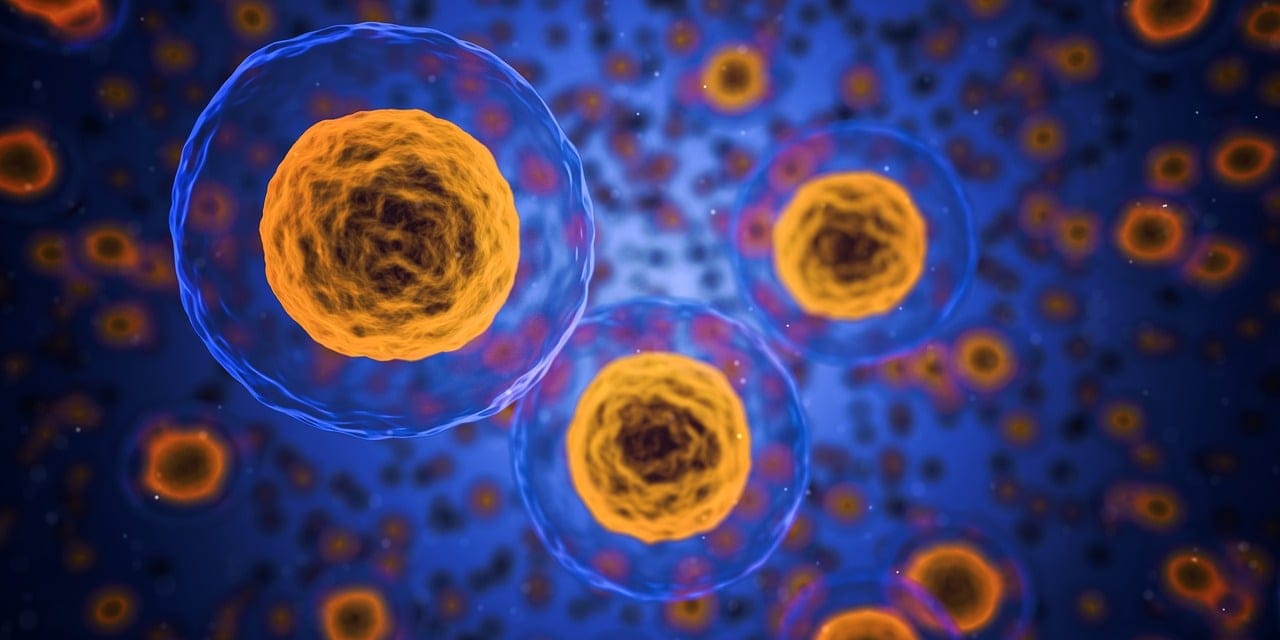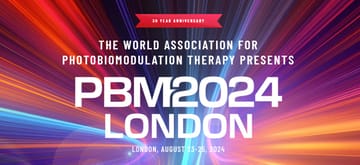You've probably heard about the dynamic of red light therapy on mitochondria. The standard story is, here, that both red and near-infrared light - which are emitted by red light therapy - enter your body. Once entering the cell, the red and near infrared light improve energy-production.
The cells themselves become more efficient, and (chronic) inflammation go down, both of which benefit how much energy is created in the cell. However, this story is dangerous because it gives an easy explanation for a very complex phenomenon.
Many different mechanisms likely exist through which red light therapy affects your health. And, by focusing on red light therapy and mitochondria only, you'll end up with a misleading narrative.
Nevertheless, let's first explore what mitochondria are - which are considered the "energy-producing factories" of your cells:
The Role And Importance Of Mitochondria
The mitochondria took center stage in human health and wellness in the last 20 years. And that trend likely isn't over yet. Doug Wallace's paradigm-shifting research lays at the basis of that 20+ year trend of the mitochondria taking the center stage of human health and wellness (1; 2; 3; 4; 5).
In the early 2000s, Wallace made the argument that much of disease is mitochondrial in nature, whether that's diabetes or heart disease or neurodegenerative disorders. All of these diseases develop with age, so that the older you get, the higher risk of getting them.
But why?
Well, next to the nuclear DNA in the center of your cells (the nucleus), you've also got mitochondrial DNA. Over time, due to stress, poor recovery, bad sleep, and plain aging, that mitochondrial DNA isn't everywhere the same anymore. That diversification of the mitochondrial DNA is called "heteroplasmy rate". As you age, the heteroplasmy rate goes up, and then the risk of disease goes up.
So, in your 20s, it's pretty easy to avoid diabetes or Alzheimer's, because you've got a low heteroplasmy rate and energy-production in your cells is sky-high. But once you're 60 or 70, disease risk rises dramatically and it's not as easy to stay healthy as when you were younger. Also, your energy levels tend to be lower than when you were 20.
The mitochondria take the center stage of that development. But, besides energy-production, researchers have found many other roles of the mitochondria in time, such as being part of a survival mechanism and the immune system (6: 7; 8). There's a so-called "cell-danger response", an ancient protective mechanism that pushes the mitochondria and body into a protective state with very low energy production.
That cell-danger response is adaptive because it helps you survive, but it's also tied to disease such as chronic fatigue and fibromyalgia. To heal from that danger response, you'll have to remove all stressors in your life and very slowly build your exposure to stressors back up. Your mitochondria will then return to normal.
Nevertheless, mitochondria are extremely complex and are strongly linked to health and disease (9; 10; 11; 12; 13; 14; 15). If you have more, healthier, and bigger mitochondria, your energy production will be higher. And, generally with age, you'll have fewer, smaller, and more dysfunctional mitochondria, which increase disease risk.
Mitochondria are directly tied to anabolism (the building of tissue) and catabolism (the breakdown of tissue). Mitochondria play a major role in the creation of melatonin - the sleep hormone that's present more in the cell than in your blood. Mitochondria communicate with other parts of the cell. The mitochondria talk with circadian clocks, your gut, and even the immune system. Mitochondria affect mineral status such as calcium and iron. So, it's not a coincidence that once you've got mitochondrial dysfunction, the entire body can break down.
Next, up, let's consider how red light therapy affects mitochondrial function - and can play a major role in keeping your mitochondria healthy!
How Red Light Affects Mitochondrial Function
The typical mechanism by which red light therapy affect the mitochondria is called the activation of "Cytochrome C Oxidase" (CCO) (16; 17; 18). That CCO process is one of the last steps in the energy-creation process in the mitochondria, and then leads to the creation of what is called "Adenosine Tri-Phosphate" (ATP). ATP is considered the primal energy currency in the cell. Meaning, that the more ATP you generate, the higher your energy levels will be.
In plain English, by affecting CCO, the amount of energy in your cells increases. And, with more energy, you'll get healthier.
There's no universal consensus about this dynamic in science, however. I'm quoting myself here, from 2018, in a blog I wrote about red light therapy way back then:
"(some highly regarded (but also highly controversial) scientists, such as Albert Szent-Györgyi, Gilbert Ling, and Gerald Pollack, have suggested through their work a very different conception of the primary role of ATP in the cell than the conventional model, an idea which is slowly garnering support among scientists. This idea involves ATP facilitating the flow of energy in biological tissues through its unique structure and molecular distribution of electric charge rather than acting solely as a simple carrier of chemical bond energy as "currency, "as is the current highly-simplified conception.[333-335])" (19)
Lately, some other thought leaders in the red light therapy space have speculated about related mechanisms. One example is Prof Dr Michael Hamblin, who I met at PBM 2024 (Photobiomodulation 2024). Here, Prof Hamblin speculated that red light therapy decreases the viscosity of the interfacial water which allows the ATP synthase to rotate quicker and then produce more ATP. This process isn't completely speculative as there are papers published on it (20; 21; 22).
A recent paper even writes that - and apologies for the complexity:
"Despite the immense literature on the involvement of cytochrome c oxidase (COX) in LLLT, the assumption that COX is the main mitochondrial photoacceptor for R-NIR photons no longer can be counted as part of the theoretical framework proper, at least not after we have addressed the misleading points in the literature. Here, we report the discovery of a coupled system in mitochondria whose working principle corresponds to that of field-effect transistor (FET). The functional interplay of cytochrome c (emitter) and COX (drain) with a nanoscopic interfacial water layer (gate) between the two enzymes forms a biological FET in which the gate is controlled by R-NIR photons. By reducing the viscosity of the nanoscopic interfacial water layers within and around the mitochondrial rotary motor in oxidatively stressed cells R-NIR light promotes the synthesis of extra adenosine triphosphate (ATP)." (22).
(Others are more critical of Ling (23)).
So, there's no universal consensus around CCO for energy-production in the mitochondria, but, most people in the industry evision CCO as the main mechanism.
Next up, there are many other downstream consequences of red light therapy for mitochondria:
- Lower your overall oxidative stress - which is a byproduct of energy production and harmful in excess (24; 25; 26).
- Lowers chronic inflammation, which in turn increases energy production (27; 28; 29).
- Helps create new mitochondria through a process called "mitochondrial biogenesis" (30; 31; 32).
- May aid in the fission and fusion of mitochondria, so the breakup of mitochondria and two or more mitochondria coming together (33; 34; 35). The evidence is not the best here yet though!
- Influences so-called "gene expression", the parts of the DNA that are activated, through transcription factors (36; 37; 38). Gene expression is a likely reason why you can have one session of red light therapy and then have days and even weeks of positive results, in some cases such as depression.
Advantages Of Red Light Therapy For Mitochondrial Health
Generally, I don't want to overcomplicate this topic too much. To get the benefits, such as red light therapy and increased energy, you'll have to use red light therapy. If you want to know how, check the excellent red light therapy dosing video that Alex created below:
You may also want to read about my red light therapy dosing chart on the science of dosing for different goals, and general blog about red light therapy dosing.
Suffice it to say, that, through the mechanisms I've described in the previous section, you'll get the benefits many people resport on, such as improved energy, better sleep, less inflammation, enhanced joint health, and more!
Undergoing Research And Future Prospects
The understanding of mitochondria is always evolving. The same is true for the energy creation process in the human body. Yes, there's tons and tons of research going into this topic, and the understanding of mitochondria that we had 20 or 50 years ago, has changed.
I don't think there's a particular reason to believe that we know everything about mitochondrial function right now. The scientific viewpoint of mitochondria is poised to be very different 50 or 100 years from now. And yet, I'll be updating you with the latest developments in this area - by also updating this blog over time.
In the last decade or so, we've seen real paradigm shifts in the scientific understanding of mitochondria, such as with the cell danger response and the ATP synthase mechanism. So, 15 years ago our understanding was completely different than it is today, and 15 years from now it will have likely changed as well. Nevertheless, these developments are extremely exciting because better understanding of mitochondrial function allows you to manage your health better.
Do keep in mind that red light therapy is just one tool for mitochondrial function. Sleep is essential for mitochondrial function as well, as is exercise and movement. And there are selective tools you can apply for mitochondrial function, such as cold showers or ice baths, and heat exposure (such as infrared saunas), that build mitochondrial function. Many of the steps of the energy-creation process in your mitochondria, moreover, depend on vitamins and minerals - so it's key to eat a healthy diet.
Fasting can be another helpful tool to improve mitochondrial function. But with fasting, you'll have to monitor yourself well and ensure you don't lose too much lean muscle mass, for the optimal health benefits.
Conclusion: Red Light Therapy And Increased Energy Is Real!
Many people report using red light therapy and increased physical energy levels. The mitochondria are at the center of that benefit, but aren't fully understood yet. I nevertheless highly recommend red light therapy to almost anyone, except if you're getting tons of sunlight exposure on your full body every day - then there's probably slightly less value in red light therapy!
If you wish for more examples on red light therapy and mitochondrial function, check my blog posts about red light therapy and the brain, for instance, or red light therapy and depression!
Frequently Asked Questions: How Does Red Light Therapy Affect Mitochondria
Below I answer a few frequently asked questions:
Does Red Light Impact Mitochondria Function?
Yes, red light therapy affects mitochondrial function. The standard science explanation is that it influences Cytochrome C Oxidase, the last step in the energy-creation process of the mitochondria.
Mitochondria are often conceived as the "powerhouses of your cells"
Which Wavelength is Best to Boost ATP?
You'll probably want a combination of red and near infrared wavelengths - especially the latter as it penetrates more deeply. If you want more info on this topic, check my red light therapy wavelength guide.
Does Red Light Therapy Give You More Energy?
Most people will get increased energy from red light therapy, especially if they don't have much red and near infrared light exposure such as from sunlight.
So if you've got an indoor office job, for instance, and can't get any sunlight exposure in your daily life, red light therapy may be a game-changer for you!
Found This Interesting? Then You Might Like:
- Start Here - Light Therapy 101 & Buyers Guide
- Discount Codes, Deals & Recommendations - Red Light Therapy
- Red Light Therapy For Upgrading Your Brain Health
- Red Light Therapy For Weight Loss: The Science Of Supercharging Fat Loss
- Red Light Therapy For Sleep: The Science of Sweet Dreams
- Red Light Therapy Dosing: Why It's Complicated!
- Red Light Therapy Dosing Chart: The Raw Data From Hundreds Of Studies
This is a post by Bart Wolbers of Lighttherapyinsiders. Bart finished degrees in Physical Therapy (B), Philosophy (BA and MA), Philosophy of Science and Technology (MS - with distinction), and Clinical Health Science (MS), has had training in functional medicine, and is currently chief science writer.









